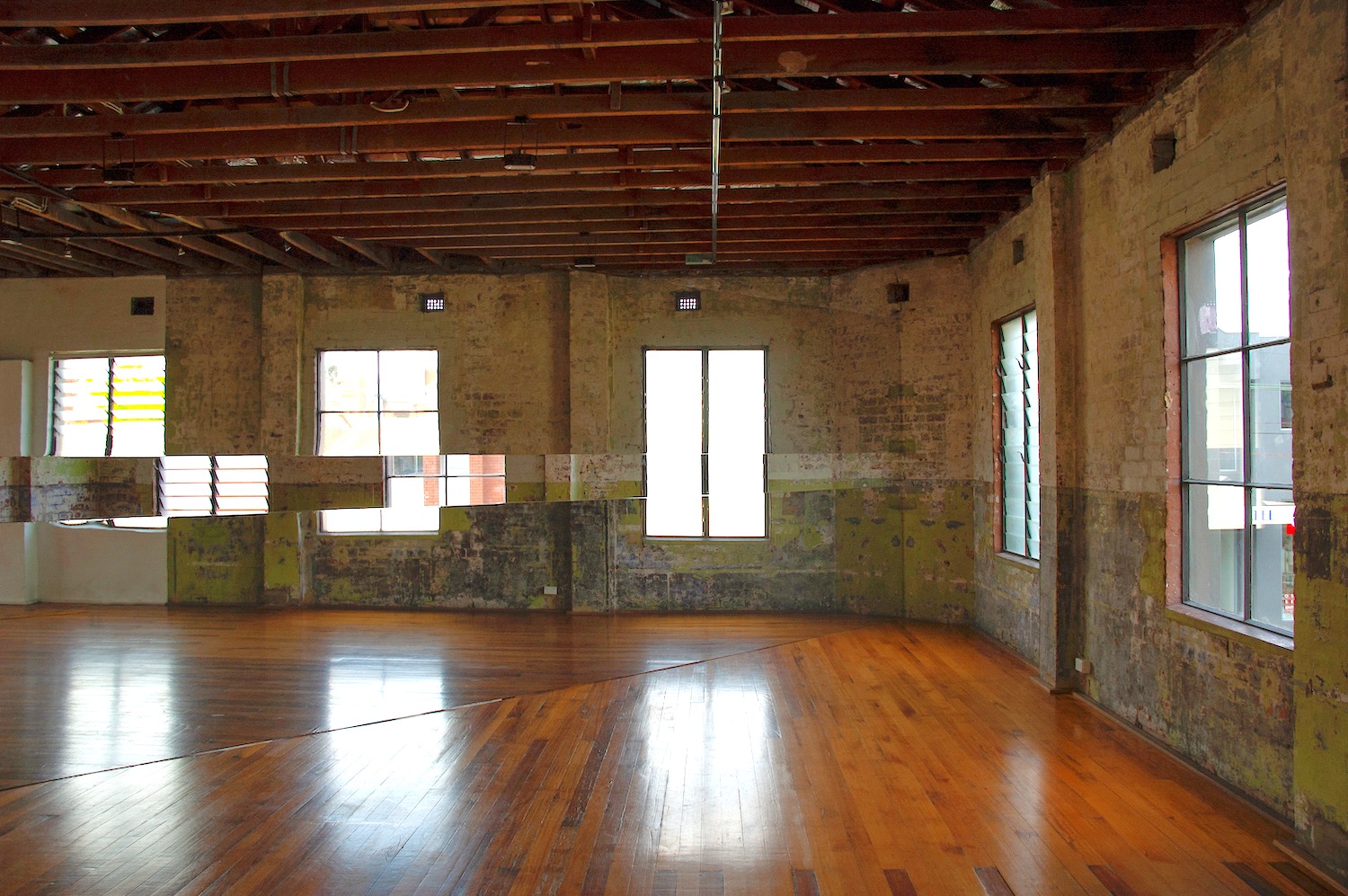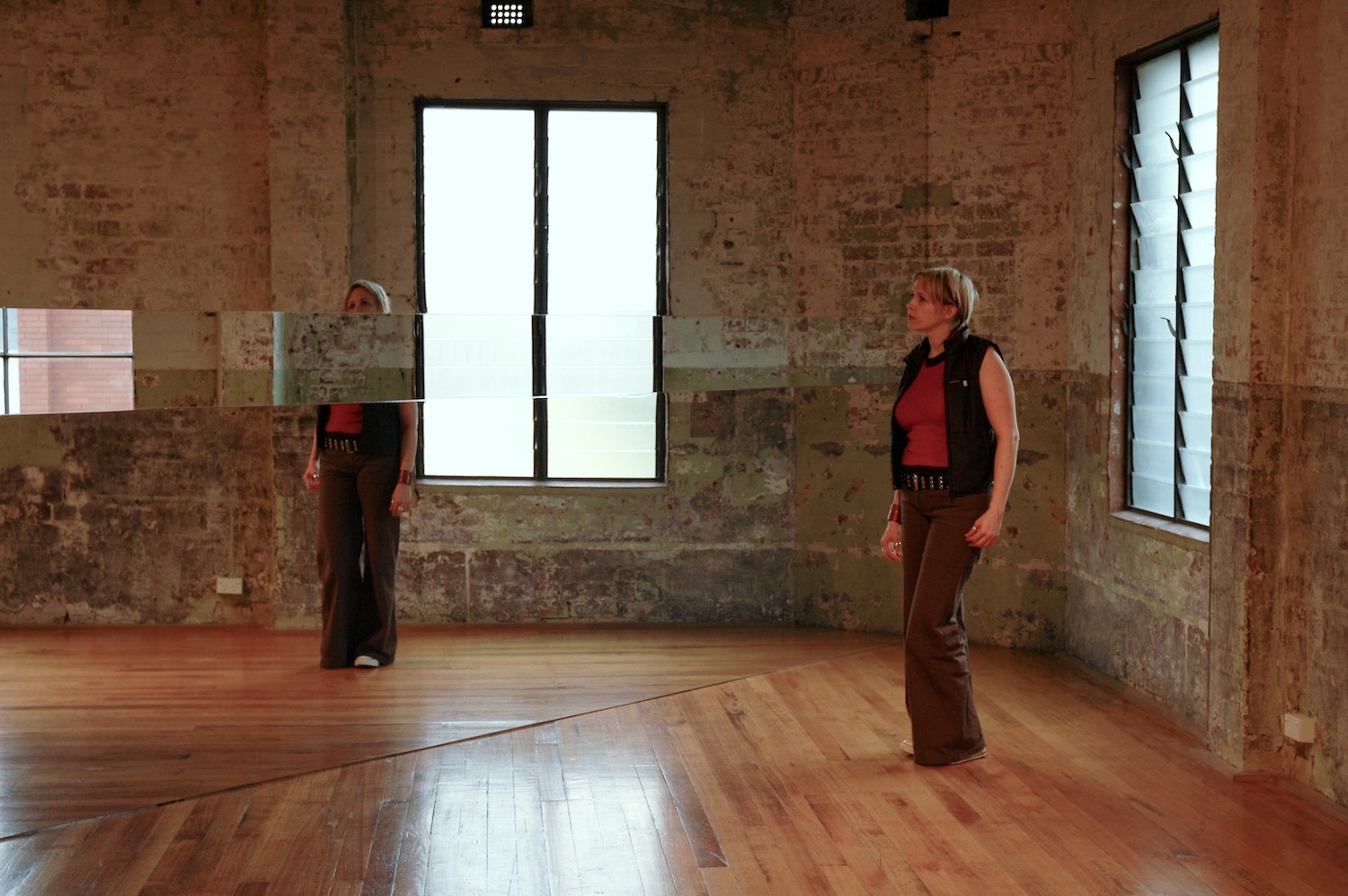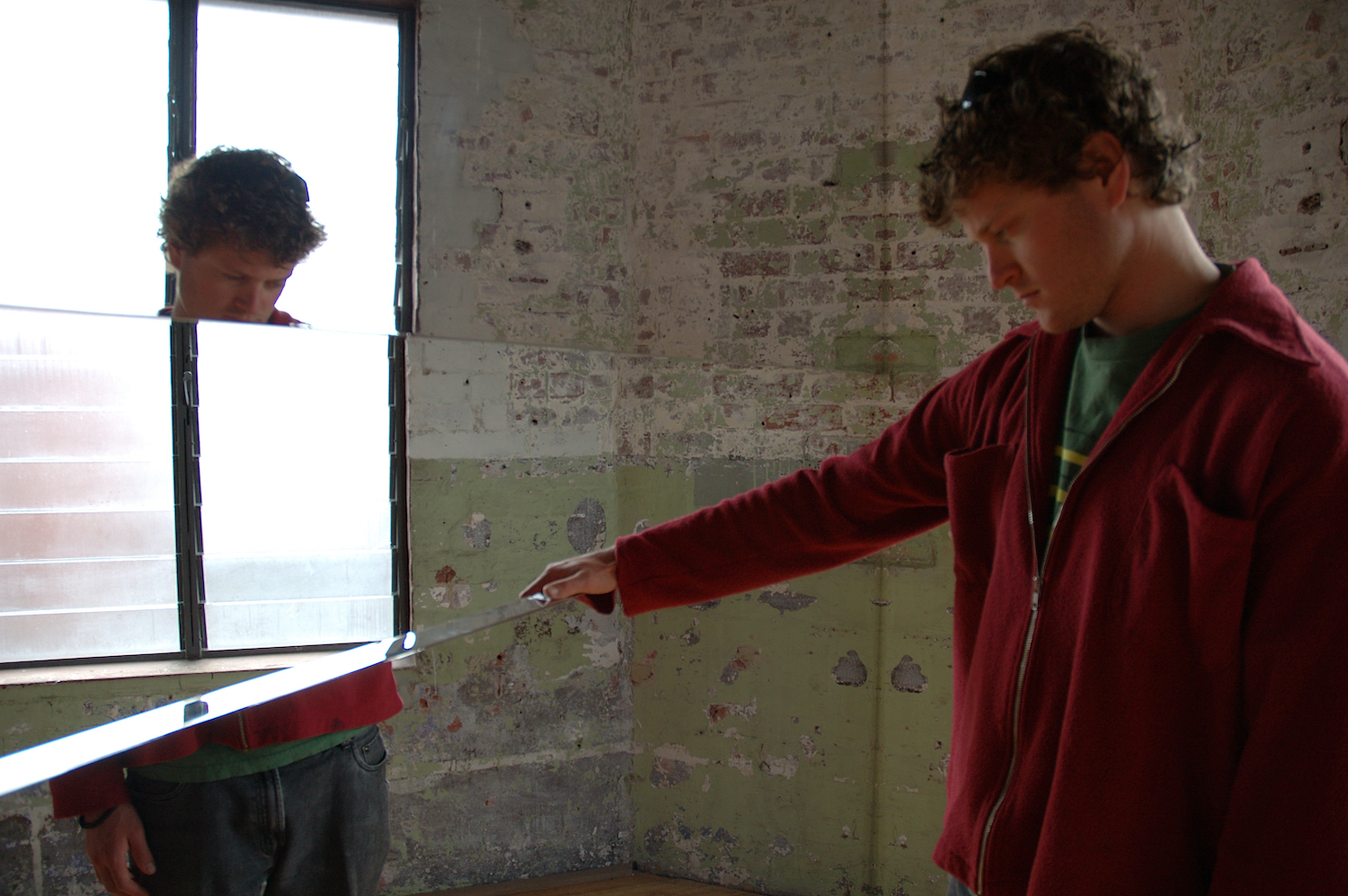Pointform
A collaborative installation with Natasha Johns-Messenger,
Conical Gallery, 2004




Heat stretched mirrored films, steel frames
Pointform
Leslie Eastman and Natasha Johns-Messenger
Conical Contemporary Art Space Inc.
5 20 November 2004
by Kit Wise Un Magazine Issue 3
Pointform, a collaborative spatial installation by Leslie Eastman and Natasha Johns-Messenger, proposed that the space of the gallery itself was both the subject and the spectacle of the work. Pointform seemed to present a philosophical problem, perhaps a variation on the seminal essay by Rosalind Krauss, ‘Sculpture in the Expanded field’, concerning how the site of an art work and the work in that site is seen to ‘collaborate’ in the perception of the viewer. In addition to focusing on the remarkably beautiful gallery, a central concern was the impossibility of registering the space of the work in isolation from the active viewer. That much-vexed notion of perception was given a thorough going over. Not only was the perceptive act of individual viewers deconstructed; there was the experience of observing other people in that space the perceiving of the perceivers.
Subtle shifts in the reading of the architecture of Conical were overpowered by the seemingly fragmented bodies of the other viewers floating hand gestures, disembodied heads, absent torsos caused by a deceptively simple device. A mirrored wall bisected the gallery, with the middle band removed and placed across an adjacent corner. The mirror was a highly reflective membrane, stretched over a triangulated steel frame and heated with blowtorches to be pulled absolutely taught. The material suggested the infinitely sensitive chemical surface of a photographic negative or cine-film. Perhaps solarisation, the lower-tech forerunner of such processes, where the negative or shadow of an object is recorded through sunlight falling over it and onto specially treated paper, more accurately described the interplay of presence, absence and light in the installation. Curious moments of mise en scène proliferated, often reminiscent of the 1933 film adaptation of H.G. Wells’ The Invisible Man (1897), as the field of our peripheral vision became a mutable and fluctuating zone, a blind spot in our experience of the gallery.
The revolutionary illusionism of James Whales‘ early special effects seemed to resonate throughout the installation. Voids in perception were encountered in the locations where the reflective surface of the work and the fabric of the architecture met. Too intimate to be disrupted by the reflected image of the viewer, these small sites created Rorschach-like patterns, an effect emphasized by the mottled texture of the distressed walls of the gallery. As intended with the original psychometric tests, these quieter instances in the installation where the imagination of the viewer projected through the perception of an image represented unformed absences. Capable of registering the act of perception alone, they excluded the absolutes of both the space and the viewer.
Assume that any notion of space can be taken as an absolute in the advent of quantum mechanics and string theory; in which space bends under gravity and the three dimensions are reconciled with another seven (if not twenty three...). In this context, Eastman and Johns-Messenger could be said to have introduced a ‘singularity’ into the gallery: a unique point (or point-form) such as a black hole, which answers only to its own rules of physics and in doing so poses profound questions about the medium that has created it.
Perhaps it is not the answers provided by science but its hypotheses that were of real interest to the artists. The pictorial systems of classical perspective and analytical cubism were both interrogated by the installation. The dependence on vanishing points and horizon lines on the one hand; and refracted, unfolding multiple-views of objects (viewers) in space on the other. Perhaps the work operated as Einstein predicted, by deforming vision and the perception of space, through the ‘gravity’ of the installation. Rather like a diffraction grating, which is capable of bending light into curving, converging trajectories, Pointform conflated figure and ground, content and context, revealing perception as the glue or gamut of the two conditions. In doing this, the work accelerated a familiar aspect of current Melbourne practice via a collaborative methodology, both in the partnership of Eastman and Johns-Messenger, and within the scope of the project itself. This very timely ambition harnessed the potential of relational aesthetics with the best of post-Minimalist abstraction: able ‘to boldly go and seek out new life…’
Kit Wise is an artist and occasional art writer.